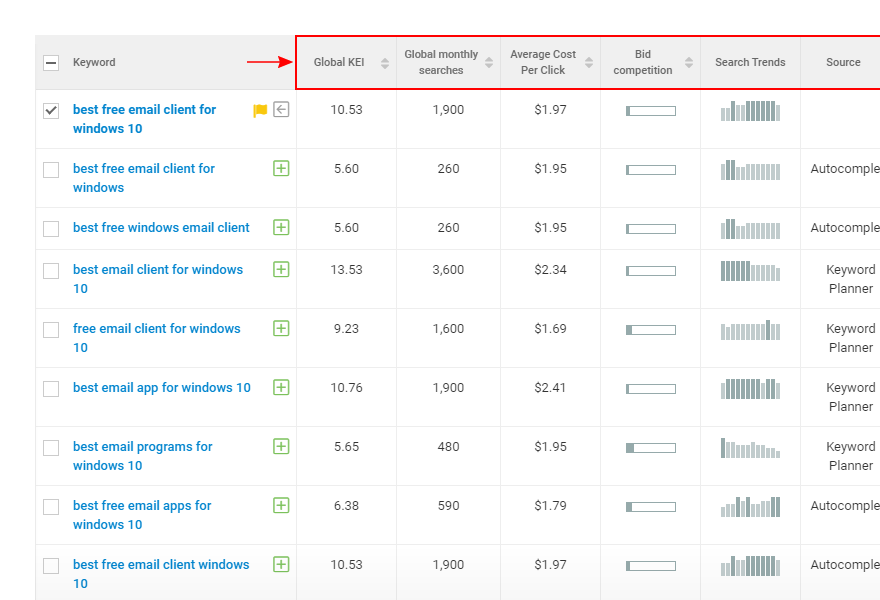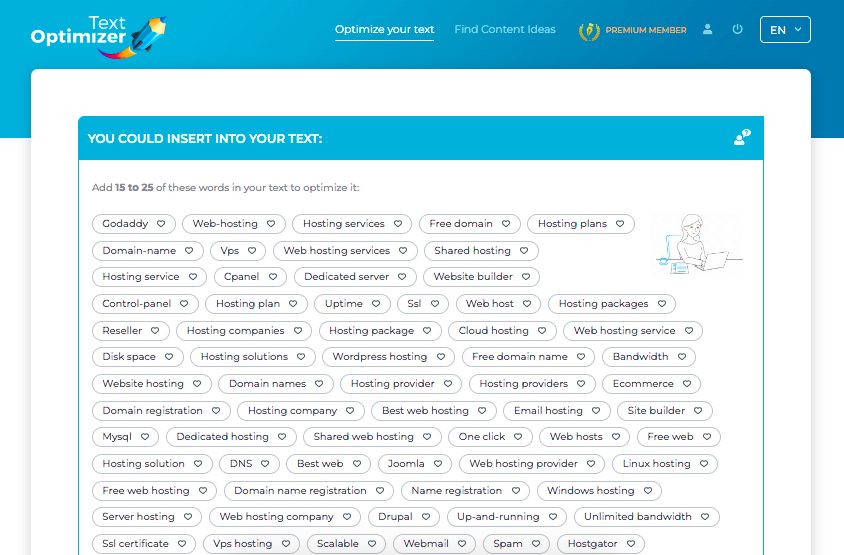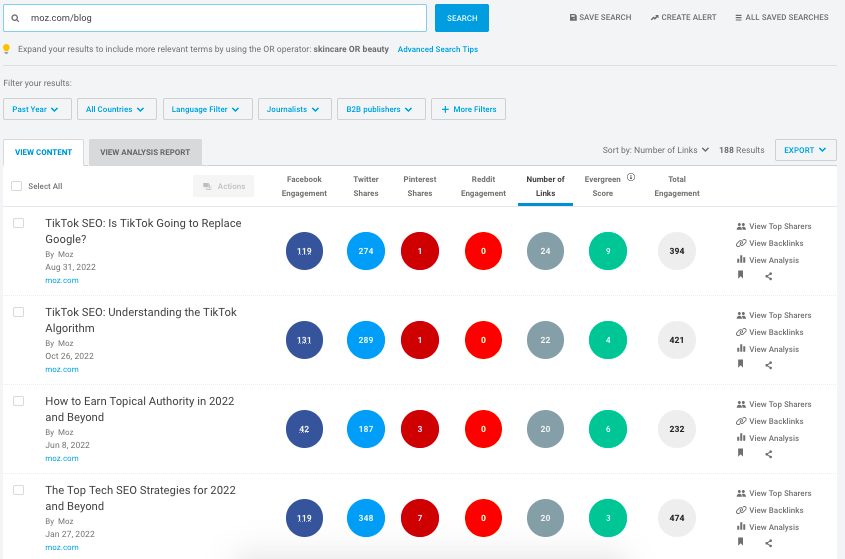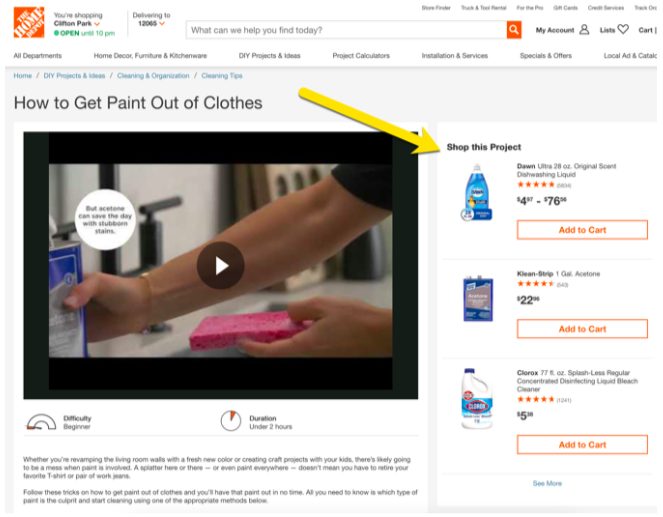News and Insights
How to start a blog to diversify your site’s rankings
February 1, 2023
Fundamentally, your site’s organic traffic depends on how well you choose your keywords. You want to be ranking for keywords that are relevant to your business and your target audience. Keyword research helps you identify your target audience’s needs and cater them by creating web pages that satisfy those needs. SEO-friendly blog posts are one of the great ways your site can target keywords in organic search.
Why is a blog good for SEO?
Blogging can be a great resource of content for SEO as it gives you more freedom in choosing which keywords you create content for: you are not limited to keywords focused on your products or services. With a blog you can target the long-tailed keywords; queries where users search specific questions or interests in a topic that you wouldn’t necessarily prioritise in a product or service landing page. You can even go outside your niche, create entertaining content, add expert articles – a blog offers a lot of flexibility with your content plan.
Blog content is valuable not just for the rankings you can covet, but for the potential backlinks it can attract. Backlinks are links from external sites that point to your own; backlinks from relevant websites can be a powerful tool and help boost your ranking position in organic search.
Hence, blogging can improve your site’s SEO by diversifying your rankings and improving them by attracting links and increasing traffic to your site.
How to start your blog
Here’s our step by step guide to starting a blog for your business to improve your performance in organic search.
Step 1 — set up your blog on your site
If your business is already online, you already have a domain. If you are still going through the business digitalisation process, use Namify to register an affordable domain. WordPress is likely the platform of your choice when it comes to creating a blog.
I may be biased, because I don’t have much experience in any other blogging CMS but WordPress definitely has the most powerful and active support in terms of community, resources and plugins.
- Find a well designed and optimised wordpress theme. I usually look at Colorlib for my premium themes. I will also make sure I have a nice designed logo as I believe branding is important
- Sign up to a good quality host with quick support. No one wants to visit a slow loading website, it doesn’t matter if you have 10 visitors or 10,000 visitors per day. Get your pages loading fast by improving your blog’s performance.
- Install essential plugins (SEO, backup, security, caching, etc.) If I’m selling something I’ll sign up to an A/B testing service to test and tweak my pages. Optimizely, Convert, ABTasty are a few good ones that offer affordable packages.
Step 2 — decide your branding and voice
If you already have a site, this step is easy: You just need to transfer your visual branding elements (logo, colours, fonts, etc.) to your blog.
This is one of those foundation steps that every blogger must go through, and even revamp occasionally. While your writing “voice” and “tone” will develop over time, the sooner you figure out your blog’s colour scheme and how that communicates your goals, the better. You may also want to incorporate the same branding across your social media accounts to consolidate your brand’s visual identity.
Step 3 — create a content plan
Okay, now that those foundational steps are complete is creating a plan. It doesn’t have to be a full-scale editorial calendar but an actionable roadmap will let your team understand the direction and take appropriate action.
While it’s highly unlikely that your team will be able to produce content daily, it will become critical to balance out your resources to where they are not overwhelmed.
First, see if your team can maintain writing one new article once a week. Remember, frequency is not as important as quality and consistency. You can start by blogging once a month and let your team adjust the schedule as they get more comfortable with that. When planning content don’t forget that Google’s E-E-A-T factors (Experience, Expertise, Authority and Trust); factors the search engine considers when ranking content. Have your team writing on the topics they’re the experts for; not only will it be easier for individuals to commit to writing blog content, but this expertise will carry into the resulting article and make a big difference when Google crawls and indexes the content.
While figuring your future blog’s plan, start looking for writers. You need people who are passionate about writing and chances are, your team has quite a few of those. I always encourage brands to try and find writers internally. There’s no one more knowledgeable about your products and target audience than your current employees.
Invite your team to submit content ideas, article excerpts and full-scale articles. Don’t make it a competition because it will scare away your most creative but quiet talents. Simply make it a fun incentive with no strings attached, except for a modest reward for each effort.
Step 4 — pick your keywords
Your blog’s goal is to bring more traffic, so keyword research is fundamental. You need to know what your target audience is searching for and what kind of problems they are solving.
Luckily, there are tools that help with keyword research for blog topics, such as WebCEO. To use this tool, simply type your core term and let the tool extend based on what people in your niche search for. The tool consolidates several keyword sources (keyword planner, autocomplete results, Google Trends, etc.) and lets you estimate the organic competitiveness of each keyword.

When completing keyword research for your blog, try and expand your keyword list beyond the obvious:
- Pick keywords with informational intent, even when there’s no direct connection to your product but it can still be a solution to at least part of the problem
- Come up with more ways to position the value of your products putting them in not-so-obvious contexts
- The beauty of blogging is that you don’t have to always stick to your company’s direct value proposition. You can get more creative than that and experiment with various topics and formats
Once you know which keywords can become content ideas, run each of them through Text Optimizer which is a semantic research tool generating underlying concepts behind each search query.

Use these words to create content briefs for your writers to know what needs to be covered in each article. They can also be used when writing blogs to help optimise the blog article to relevant keywords.
Step 5 — target your content amplifiers
A blog is a great way to diversify content topics and rankings, but it is also an effective way to attract links. Make sure link acquisition is included in your content planning strategy.
Research the most linked content in your niche and use these findings as a direction for content brainstorming. Buzzsumo has great tools to find the most linked content on any blog. Simply type any domain and sort the list by links:

Step 6 — make sure your blog post has a call-to-action (CTA)
Targeting keywords with blog content makes no sense unless you spend some time figuring out how to convert those clicks into sales. Too many business blogs offer no clear ways for the readers to continue their buying journeys through the site and ultimately complete an action, whether that includes making a purchase or at least becoming a subscriber.
Make your blog the bottom of your sales funnel by adding your main call-to-action to each blog article where relevant, as well as creating contextual CTAs within your articles. Homedepot is a great example of contextual CTAs. In the screenshot below they’ve promoted products they sell by giving the visitor the option to shop the products mentioned in their blog.

Action items:
- Decide why you want to start a blog—do you want to sell a product or service, or are you just blogging to share your experiences, etc. This is important because if you want to blog to sell a product or service, your blog needs to have a specific focus
- Use keyword research to identify topics that fit your value proposition
- Look for internal talent to develop: Invite your team members to submit article ideas and excerpts
- Do a search for other blogs in that niche—his is important because you want to get an idea of what other bloggers are doing (how they’re structuring their blogs, etc)
- If you already know other bloggers in your niche, talk to them
- Start your blog—once you’ve got an idea of what you want to blog about and how you want to structure your blog, it’s time to start blogging!
Break down your tasks into a daily plan
Having a daily plan of action of steps you wish to accomplish that day greatly helps eliminate clutter and remove the “shiny object syndrome” from your life. Being focused and sticking to your goals can greatly help with building up a sizeable blog audience and in a year you would be surprised how far you have gone.
Blog writing tips and support
For any further support on getting your blog content to work harder in organic search, get in touch, we’d love to have a chat.
-
TAGS:
- Technology